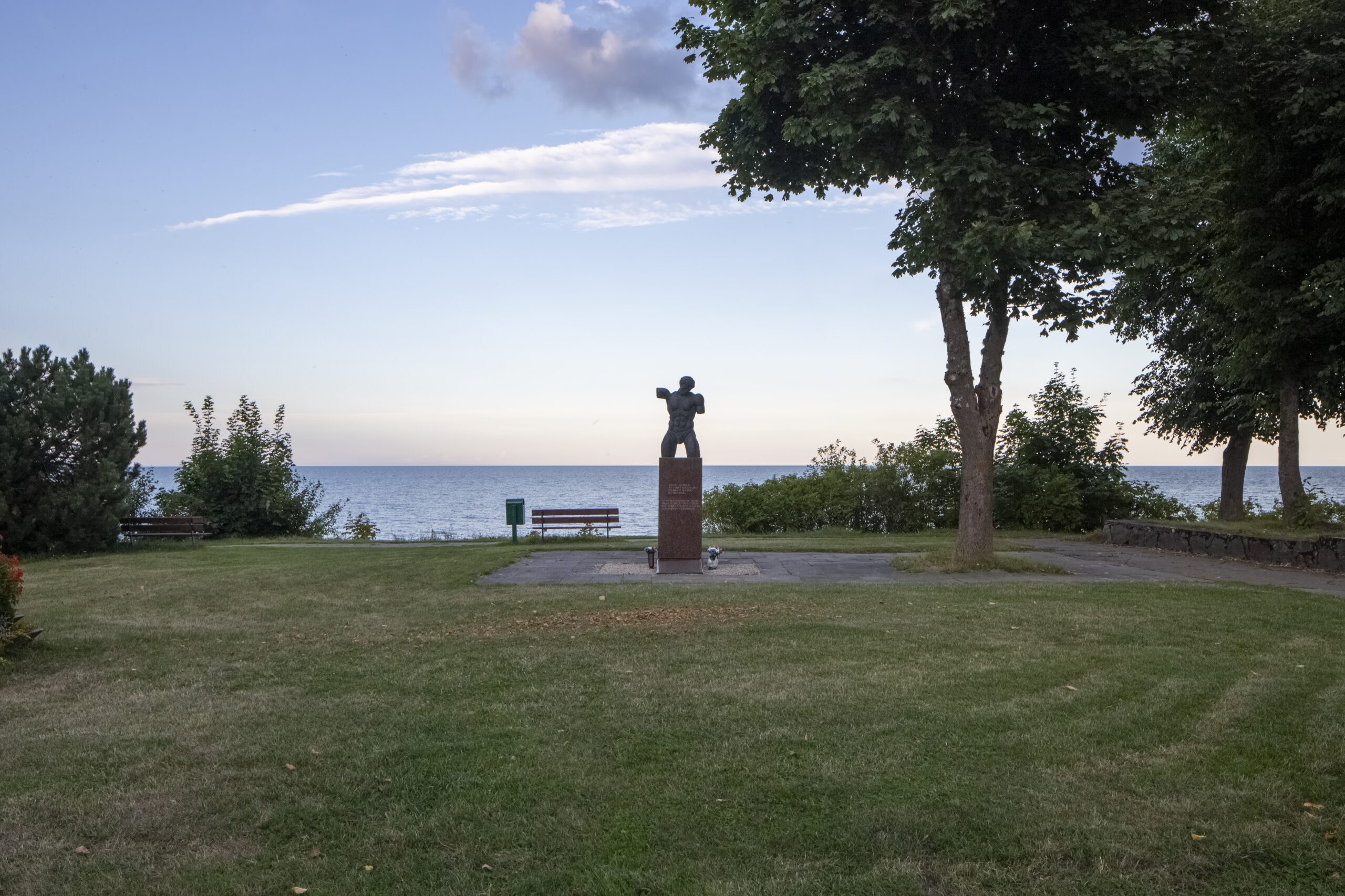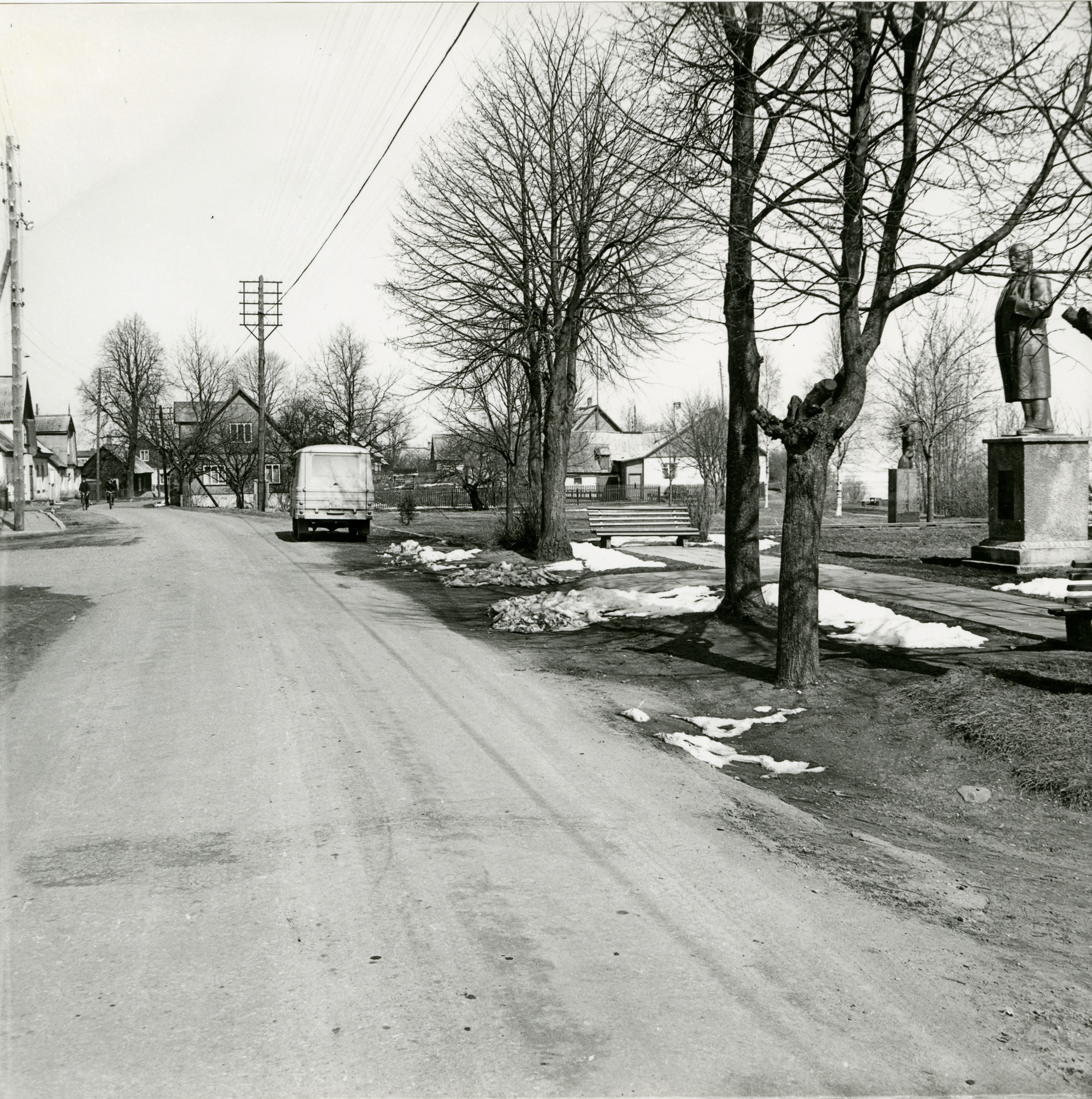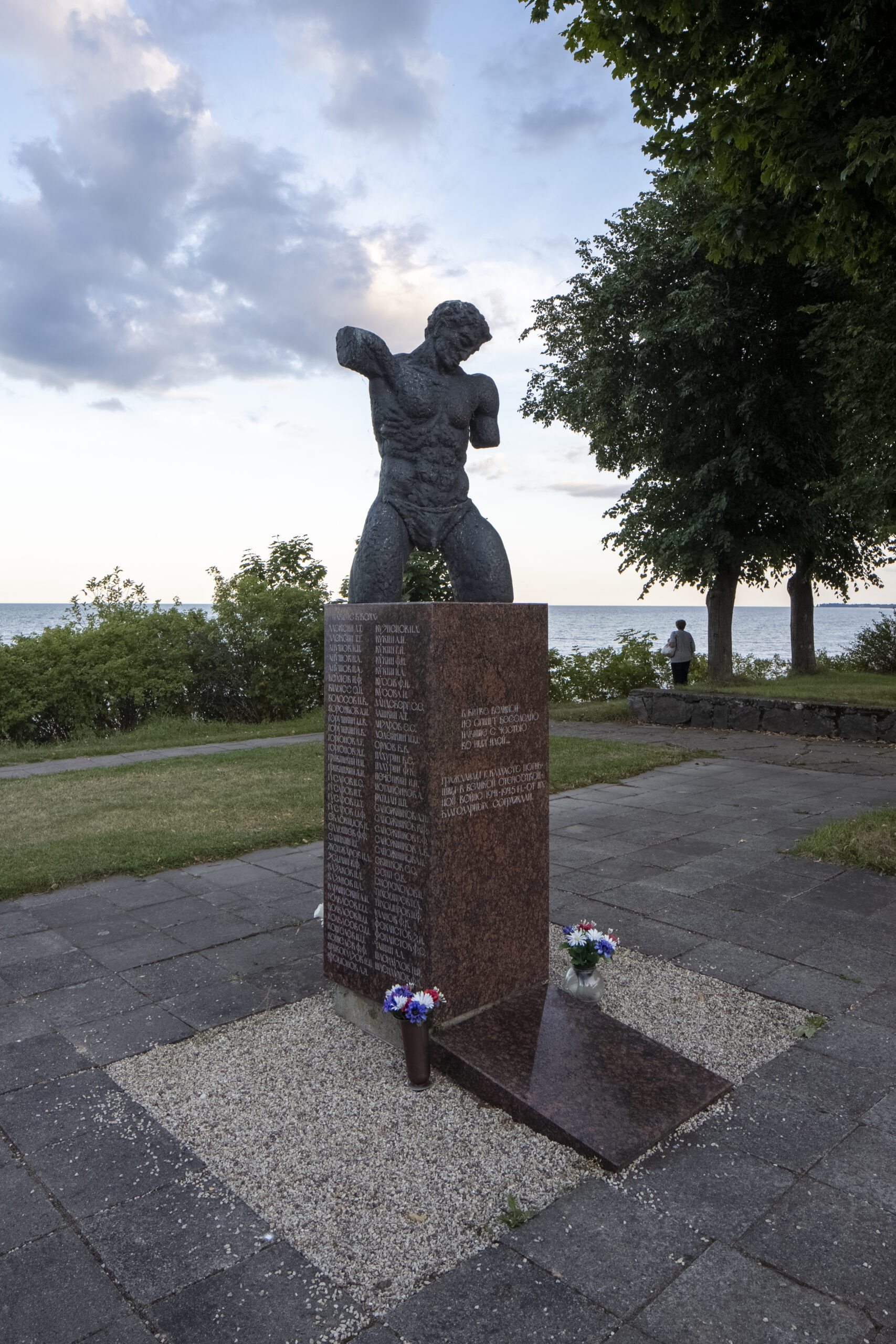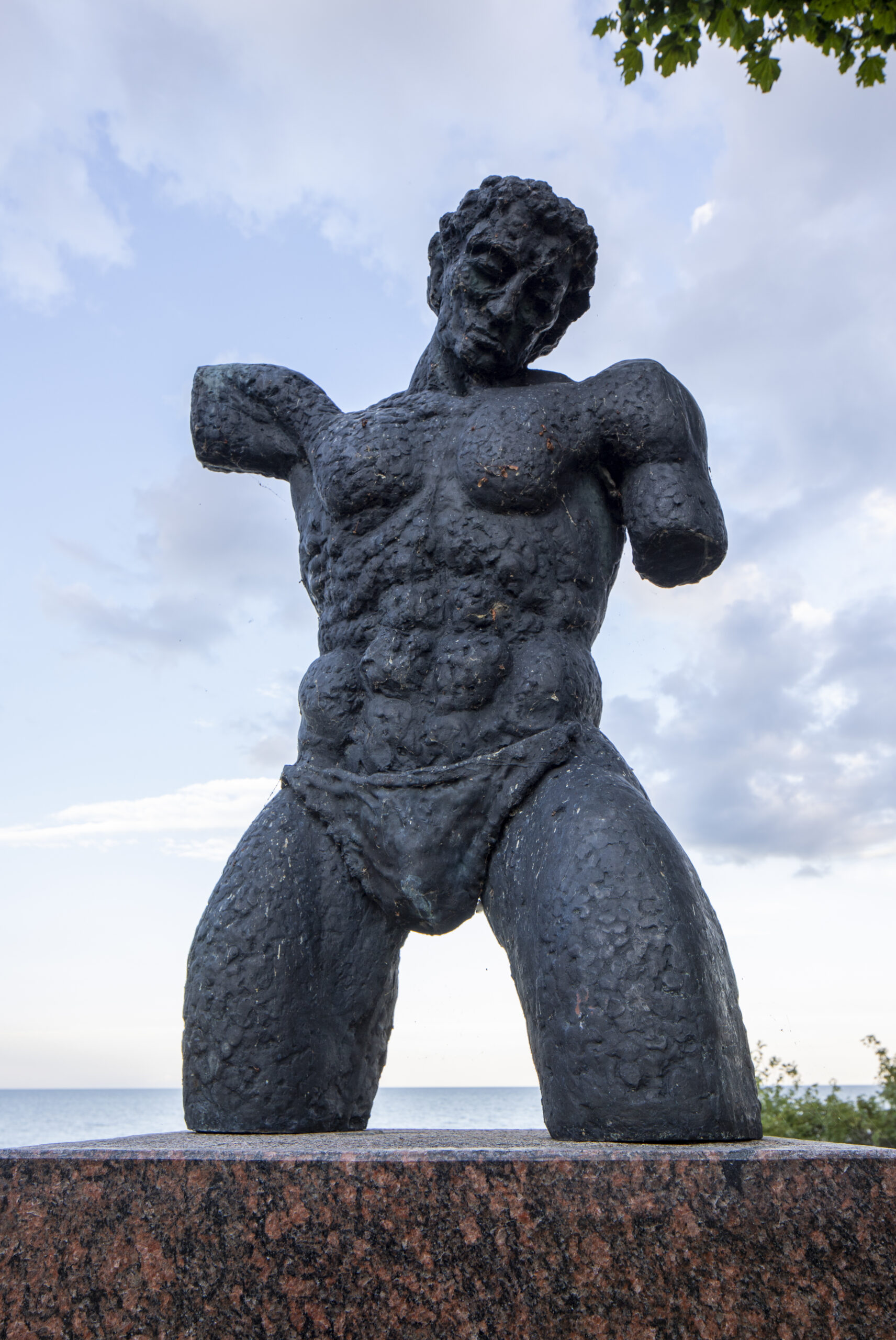Monument to the Lives Lost in the Second World War, Kallaste
Year of completion: 1981
Address: Tartu County, Kallaste, Võidu St.
Sculptor Ülo Õun, architect Ike Volkov
Bronze on a granite architectonic structure
Not under conservation as a cultural monument
It would be unjust to expect a military monument from a sculptor with a creative style like the one of Ülo Õun (1940-1988) to be typical of its time. However, Õun has created not one but two memorials for those fallen in the Second World War. Both the one created on the shore of Lake Peipus and the one erected in the new Tornimäe cemetery in Saaremaa are distinct from the ideologically-ridden public war memorials of the Soviet regime, rather being reminiscent of the artist’s personal creations, which also differed from the sculptural scene of the time.
The torso of a young man with residual limb stumps, erected on a high granite socle on the shore of Lake Peipus, creates an association with the crucified Redeemer. Classical antique canons are the basis of this sculpture, as was characteristic of Õun’s work. Perhaps the sculptor has also been influenced by the familial memory of his father who died as a young man during the first months of the war, and with whom the year-old future sculpture never got a chance to familiarise himself. The robust torso of the suffering man has as if sunk into the polished granite cuboid up to his thighs. The curls covering the lowered head and the powerful musculature are reminiscent of the numerous Ancient-Greek sculptures from art museums around the world, which Ülo Õun never had a chance to visit. The infinite body of water shining behind the sculpture gives the monument an additional, peculiar timeless dimension.
However, Õun’s perishing hero did not have the fortune of finding understanding and love where it stood. The population of Kallaste was mainly made up of Russian-speaking orthodox people in the early eighties, who could in no way accept a war monument so out of the ordinary. When the monument was opened on May 8th of 1981, it instantly became subject to scandals. The locals were most bothered by the overtly muscular body created by the sculptor. Probably the nude male figure’s similarity to the suffering Christ as well. Complaints about the sculpture that was in conflict with Soviet moral norms reached all the way to the highest-ranking powers of the Communist Party in Moscow. The fate of one of the most unique war monuments of the time was settled with an unbelievably brutal addition. The sculpture’s sexual characteristics were covered with “bronze pants”, specially casted in the ARS Monumental bronze casting workshop.
Juta Kivimäe










